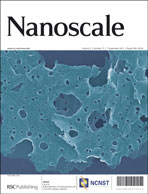Controlling the morphology of conductive PEDOT by in situ electropolymerization: from thin films to nanowires with variable electrical properties†
Abstract
The controlled electrochemical synthesis of poly(3,4-ethylenedioxythiophene) (PEDOT) as a model


 Please wait while we load your content...
Please wait while we load your content...